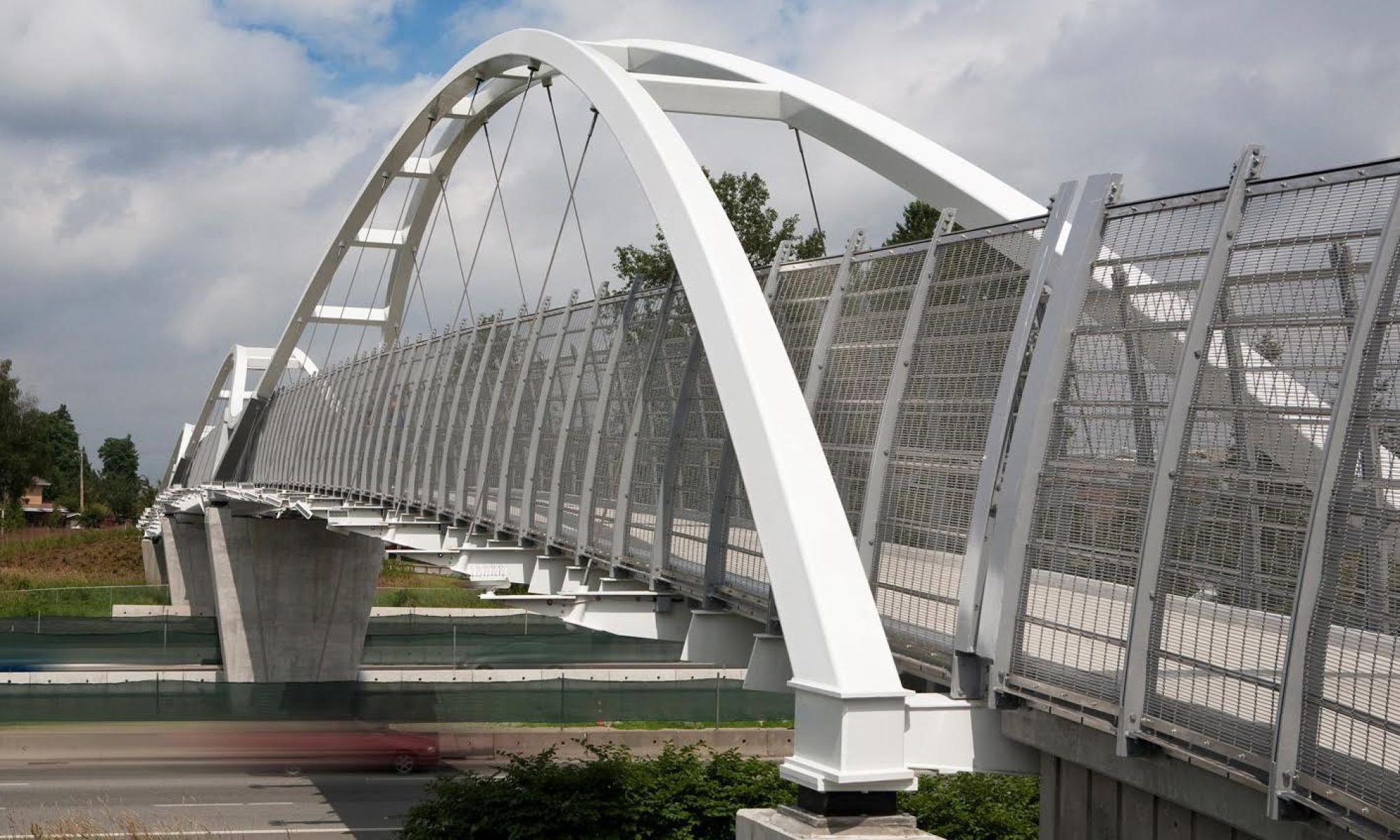Date: October 23, 2019
Presenters:
Casey Leggett, M.Eng., P.Eng., Principal Project Engineer (Mott MacDonald)
Arman Shahnaz, M.Eng., P.Eng., P.E., Project Engineer (Mott MacDonald)
Jason Dowling, PhD, Bridge Engineer (Associated Engineering)
Rehabilitation of the Westham Island Bridge
The Westham Island Bridge, originally constructed between 1909 and 1912, is a 325-meter long bridge of 34 variable length spans. Comprised of trestle-style approaches and constructed largely of timber elements, several of its spans are supported by steel stringers. Its approaches provide access to a 38-meter timber Howe Truss, a 50-meter steel Callender-Hamilton Truss, and a two-span, 44-meter movable steel Howe Truss – Swing Span.
One of Metro Vancouver’s oldest and historic structures, the Westham Island Bridge is the single gateway onto Westham Island in Delta, BC. Entering its 110th year, the Westham Island Bridge has gone through numerous rehabilitations over the years. Most recently, the bridge underwent rehabilitation in 2019 addressing significant deterioration in several components. The ongoing project includes an additional phase addressing scour at the West Approach, which is planned for construction in 2020. Annual monitoring and maintenance of the bridge continues.
Extending the Life of the Alexandra Bridge
The iconic Alexandra Bridge, is 487-meter long and built in the early 1960’s to carry the Trans-Canada Highway 1 traffic across the Fraser River. It comprises of a 257-meter long riveted steel arch main span and multiple steel girder approach spans with concrete decks.
Its detailed condition assessment and renewal options report in 2009 concluded that the bridge needed major deck rehabilitation and seismic retrofit. Subsequent rehabilitation design work addressed structural safety, structure deterioration and functionality concerns by incorporating a partial-depth reinforced concrete deck overlay and addressing concrete deterioration while facilitating widening of the roadway deck to 12.2-meters with new barriers. The main components of its seismic retrofit included re-articulation of the approach spans with installation of link decks across breather joints near the arch crown and installation of new elastomeric bearings. In its approach spans, the deck was selectively made composite with the girder top flanges using shear studs for increased capacity. The approach girders were also strengthened for shear and moment at select locations. Rehabilitation work also included deck joint replacements, concrete substructure repairs, and drainage modifications to improve structural durability. Several of the rehabilitation features fulfilled multiple functions to extend the usable life of this iconic bridge structure long into the future.
The video recording and slides are restricted to members only.

